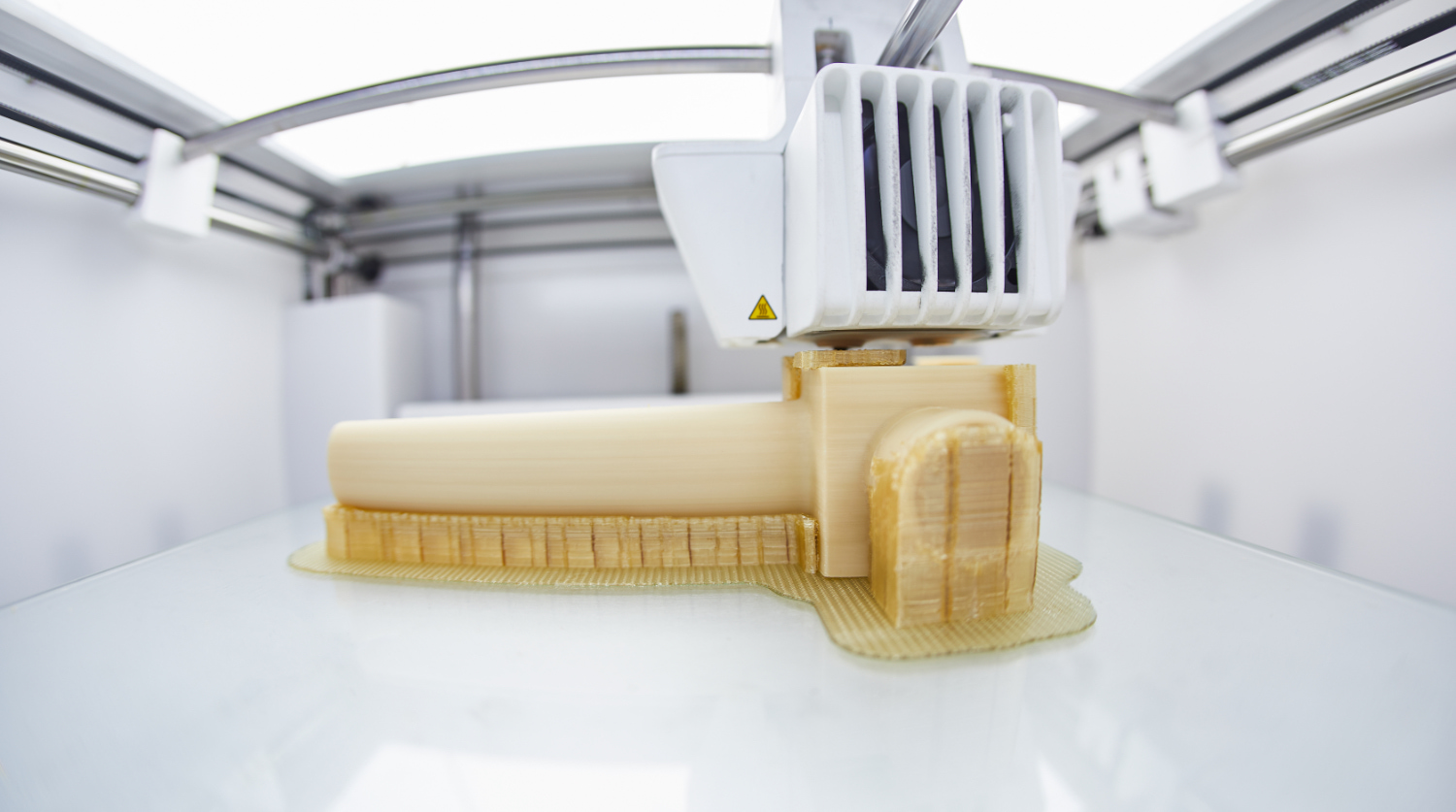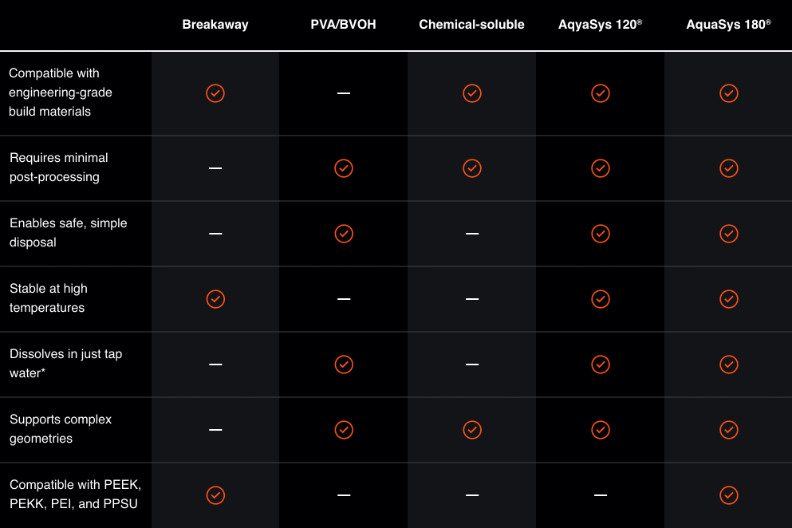Material knowledge: a guide to common 3D printer filaments
By Infinite Editorial Team
The basics of additive manufacturing materials
Additive manufacturing (AM), also known as 3D printing, allows you to innovate in new ways and create items that are lighter and have complex geometries. The name comes from how a piece is printed — literally by adding layers of material to build up a structure until it resembles a digital design, made using CAD software.
Build it right — from the start
Once you have your printer and your plans, you'll choose your materials. What you choose depends on your end product’s structure and intricacy, as well as your budget and its final purpose. You’ll need a build material (what your piece is made of) and a support material (what allows your piece to maintain its structure during the printing process).
So what are the different kinds of materials (also known as filaments) that you could use to create and produce 3D printed objects?
Find the right 3D printing filament type for the job
In additive manufacturing, the right building blocks aren’t blocks, but filaments and pellets. They're composed of different materials, with the most commonly used being plastics (or polymers). Some 3D printers can also use ceramics or metals.

Build Materials
PETG vs. PLA vs. ABS — what's the difference?
These three all have their proper time and place (and purpose). Learning the differences between PETG, PLA, and ABS will help you determine which one will give you the end product you’re looking for.
Polyethylene terephthalate glycol (PETG) is a thermoplastic polyester good for use in manufacturing as it offers chemical resistance, durability, and formability, such as bending, die-cutting, and routing.
Polylactic acid (PLA) is a thermoplastic made from renewable resources such as corn starch, tapioca roots, or sugar cane. Due to its ecological origins, this material has become popular within the 3D printing industry and is being used in medical applications and food products. And thanks to its forgiving material properties, it's also easy to print in open-air printers, rather than more expensive printers with heated chambers.
Acrylonitrile butadiene styrene (ABS) is a thermoplastic filament. As opposed to polylactic acid (PLA), ABS is more technical and may be more challenging for new 3D printing users. ABS is a stiff impact- and heat-resistant 3D printing material.
Of these, PLA is the more user-friendly, forgiving, and easier to 3D print.
While these are currently the most popular build materials available, as 3D printing continues to evolve, so will interest in more unique materials and uses. Of great interest to engineers, economists, food scientists, and foodies is the 3D printing of food. Some companies are developing edible filaments, allowing for customization, complex geometries, and on-demand production of 3D printed foods.
Polypropylene bends but doesn’t break
Polypropylene (PP) is one of the most common polymers found around the house. Food-safe, microwave-safe, and translucent, it’s an ideal material for household plastic containers.
In 3D printing, PP can be used to print items that need to be light, water-tight, or durable, as well as resistant against chemicals and fatigue. Case hinges, for example, represent a very popular use, as PP can bend repeatedly without breaking.
One new example of a polypropylene build material with additional attributes is Caverna™ PP from Infinite Material Solutions. Easier to work with than traditional PP filaments, it has a water-soluble phase that dissolves to create a co-continuous microporous morphology. After dissolution, the resulting material is soft and porous, allowing for vapor transmission. Some potential uses are printing tissue scaffolds, filters, and breathable clothing items.
Metal and ceramic
While plastic is the most common and least expensive filament used, there are also metal or ceramic filaments for specialized purposes. It's important to note, however, that these materials do use plastic binders which are dissolved or incinerated prior to sintering or firing.
Metal 3D printers, can extrude filaments made from titanium, stainless steel, aluminum, and more. These are highly heat-resistant and most often found in industrial use.
Ceramic 3D printers are often used to create artistic pieces with stone-like finishes. Like traditional pottery, 3D printed ceramic pieces can be finished at room temperature or fired.

Support Materials
Build vs. breakaway vs. dissolvable
A 3D printed object will need support if it has parts that overhang, suspend mid-air, or have internal spaces once completed. There are three categories of supports and the material you choose is determined by your build material, as well as your preferred removal technique.
Build as support.
Oftentimes, the build material itself is used as a support material. This is a simpler printing technique and works for printers that only allow for a single material to be extruded. The downside is that during removal, the user has to chip or cut away the support material with great physical effort. This can result in a rough finish.
Breakaway.
If you have a printer that can extrude multiple filaments, breakaway materials could be the right choice. Though they still require manual removal, they are easier to remove than using the build material itself and result in a cleaner finish. Breakaway filaments are less sensitive to moisture than dissolvable support materials, which gives you fewer storage requirements. Because they finish dry (without the use of liquids), they're also ideal for printed pieces that you wouldn't want to be submerged during post-processing.
Dissolvable.
The third option is to use dissolvable support materials, such as butanediol vinyl alcohol co-polymer (BVOH), polyvinyl alcohol (PVA), or AquaSys®. These provide the cleanest finish, the easiest of removals, and allow for intricate internal structures. They're the most expensive of the three types and their water-solubility also means they require proper storage and should be kept sealed and in a dry environment.
Commonly used, BVOH and PVA are white-colored high-tensile synthetic polymer filaments that support complex structures. They aren't stable at high temperatures and aren't compatible with engineering-grade build materials. A newer option that is compatible with ABS, PC, PEEK, PEKK, PEI, and PPSU is the line of AquaSys filaments. This compatibility, along with its higher temperature stability, makes AquaSys ideal for industries where these attributes would be a requirement.
"Time is money. What one gains in reduced post-processing time and part fidelity makes up for the price of a premium material like AquaSys," said Brandon Cernohous of Infinite Material Solutions. "Especially when you are printing something with more complex geometries."
Choose the support filament that’s right for you

*AquaSys 120 is 100% soluble, while AquaSys 180 contains approximately 20 wt% of an inert, non-hazardous, non-biodegradable component that should be collected and disposed of after dissolution.
Time to hit print
These are just some of the basics of popular support and build filaments. The best way to learn which materials are best for you is to start working with them.
"Additive manufacturing continues to expand the collective 'tools in the tool belt' when it comes to getting products to market fast," said Jeff Cernohous, Ph.D., Chief Operating Officer for Infinite Material Solutions. "New, novel materials and material combinations accelerate innovation and give savvy users a competitive advantage in their markets."
One additional note: There are a lot of acronyms and jargon in the world of 3D printing and AM (there’s one right there). Some of the most useful ones related to materials were defined above, but you can also find a comprehensive glossary of terms here.
If you still have questions about what materials will help you solve the additive manufacturing challenge you’re facing, the consultants at Infinite are here to assist you.